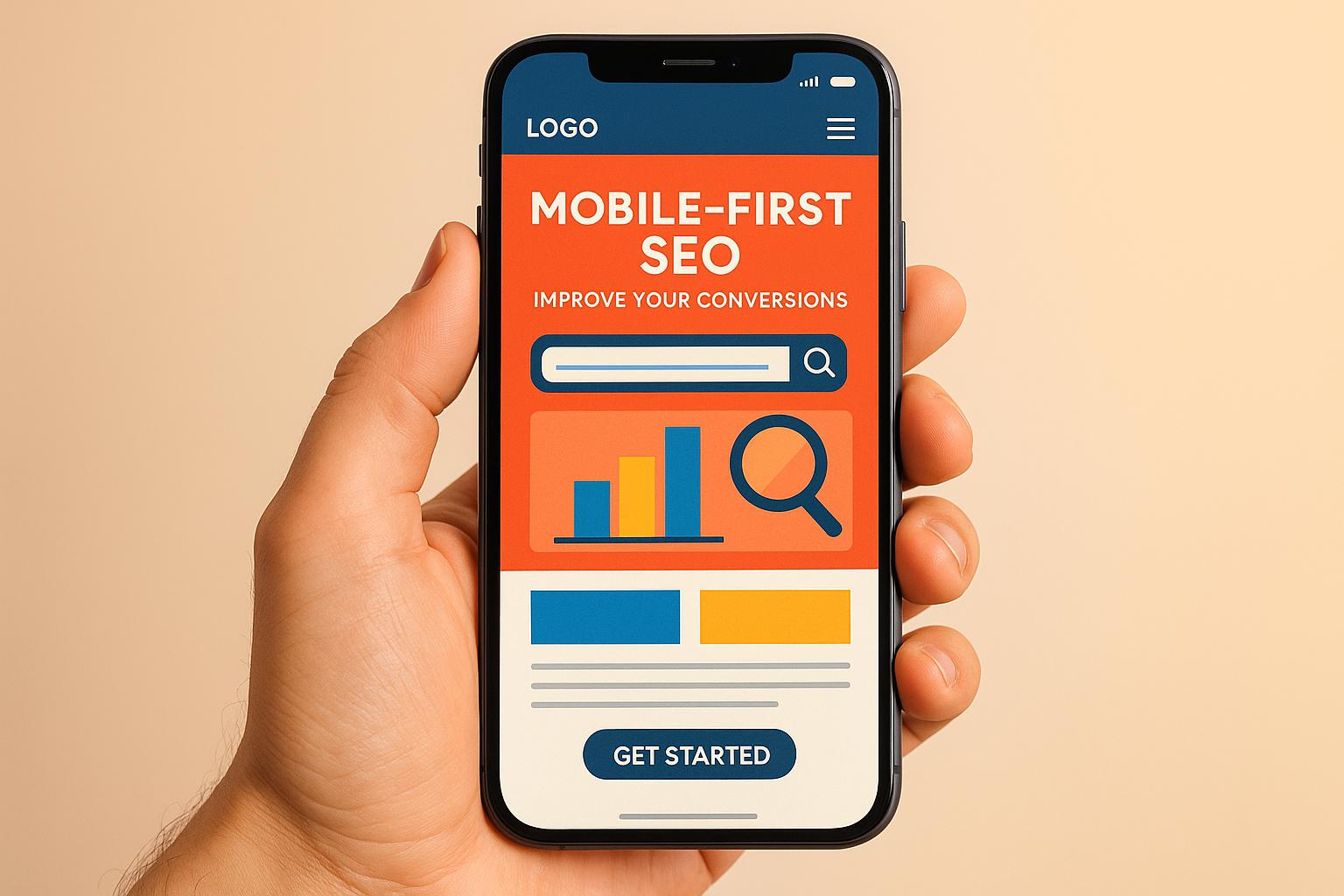

The Best Multivariate Testing Tool for 2026

The Best Multivariate Testing Tool for 2026
 08-10-2025 (Last modified: 08-10-2025)
08-10-2025 (Last modified: 08-10-2025)
When it comes to improving your website, guessing what works really isn’t the way to go. Your visitors don’t care what you think works — they care about what feels right to them. And that’s where a multivariate testing tool comes in!
Unlike simple A/B testing (where you test one change at a time), multivariate testing lets you experiment with multiple elements at once — think headlines, CTAs, layouts, images etc… and find out which combination actually drives clicks, sign-ups, or sales.
It’s like running dozens of A/B tests at once, without having to manage all the combinations of variations yourself.
And in 2026, tools like PageTest.AI are making it faster, easier, and far more accessible even for non-technical marketers.
What Is a Multivariate Testing Tool?
Let’s strip it back to basics… A multivariate testing tool allows you to test many variations of a web page simultaneously to understand how different elements interact.
Lets think of an example:
-
Headline A vs. Headline B
-
CTA Button 1 vs. CTA Button 2
-
Image X vs. Image Y
Now combine those:
Headline A + Button 1 + Image X
Headline B + Button 2 + Image Y
That’s a multivariate test — measuring how combinations perform together rather than in isolation.
It helps answer questions like:
-
Which combination of content drives the most conversions?
-
Does button color actually matter when the headline changes too?
-
What happens when you combine urgency (“Limited Time Offer”) with social proof (“Trusted by 10,000+ users”)?

Why Multivariate Testing Beats Guesswork
You’ve probably had those “gut-feeling” discussions on marketing teams.
“I think the blue button will convert better.”
“Let’s try a shorter headline.”
“What if we just add a video?”
The problem here is that everyone’s guessing.
A multivariate testing tool gives you data, not opinions. It tells you exactly which combination of content performs best with your audience and not someone else’s.
And because modern tools automate the hard parts (data collection, significance calculation, reporting), you get faster, clearer answers.
Stat Corner
Let’s put this into perspective:
-
According to Invesp (2025), companies using structured multivariate testing see up to 300% more conversion improvements than those running simple A/B tests.
-
HubSpot (2024) found that teams testing at least one page element per week are 2x more likely to hit their annual lead goals.
-
And according to CXL, multivariate testing “bridges the gap between UX and CRO — it’s where creativity meets data.”
The Best Multivariate Testing Tools in 2026
Before diving into how PageTest.AI works, let’s look at a few key players in the testing space and how they compare.
1. Optimizely
-
Pros: Enterprise-grade testing, powerful analytics, integrations with major CDPs.
-
Cons: Expensive and dev-heavy — overkill for small teams.
-
Best For: Large organizations with in-house developers.
2. VWO (Visual Website Optimizer)
-
Pros: Good for visual A/B and multivariate testing with heatmaps.
-
Cons: UI feels dated, and pricing climbs quickly with traffic.
-
Best For: Mid-size businesses running frequent conversion tests.
3. Convert.com
-
Pros: Privacy-focused (GDPR, CCPA compliant), solid targeting options.
-
Cons: Requires more setup time than newer AI-driven platforms.
-
Best For: Agencies managing multiple clients.
4. PageTest.AI (The Modern Choice)
-
Pros: AI-powered variation creation, no-code testing, real-time engagement analytics.
-
Cons: You might spend too long playing with all the variation ideas it gives you.
-
Best For: Marketers, agencies, and e-commerce teams who want fast, automated testing without developers.
Quick Roundup
| Tool | Ideal For | Ease of Use | Price | Automation Level | AI Copy Generation | SEO Safe? |
|---|---|---|---|---|---|---|
| PageTest.AI | Marketers, agencies, SMBs | ⭐⭐⭐⭐⭐ | Lifetime / low-cost | Full automation | ✅ Yes | ✅ Yes |
| Optimizely | Enterprise-level teams | ⭐⭐ | $$$$ | Manual setup | ❌ No | ⚠️ Limited |
| VWO | Mid-sized companies | ⭐⭐⭐ | $$$ | Semi-automated | ⚠️ Basic AI | ⚠️ Limited |
| Convert.com | Agencies, privacy-conscious | ⭐⭐⭐ | $$$ | Manual setup | ❌ No | ✅ Yes |

How PageTest.AI Works (and Why It’s Different)
Here’s where PageTest.AI changes the game…
Traditional tools require you to write multiple versions of your headlines, CTAs, or product descriptions manually, and then set up a test, configure goals, add code, and wait weeks for data.
With PageTest.AI, that entire process is automated. Let me show you how:
Step 1: Choose What You Want to Test
You start by selecting the element(s) you want to test:
-
Headline
-
CTA button
-
Body copy
-
Product descriptions
-
Layouts
You can test one or multiple, and PageTest.AI automatically handles multivariate combinations in the background.
Step 2: Let AI Generate Variations
Instead of brainstorming copy yourself, the AI instantly creates multiple contextually relevant variations using tone, audience, and intent signals.
Think:
Original: “Start Your Free Trial”
AI Variations:
“Get Started in Seconds — Free”
“Try It Now, No Card Required”
“Launch Your Test Today (It’s Free!)”
You can keep, tweak, or discard them in seconds.
Step 3: Run the Test — No Code Needed
Once you’re happy with your variations, PageTest gives you a small snippet or Tag Manager container. Drop it on your site (or through WordPress, Shopify, or Webflow integrations) — and boom.
You’re testing live!
Step 4: Watch Results in Real Time
No waiting around for weeks. PageTest.AI’s dashboard updates live, showing you:
-
Engagement metrics (scroll depth, time on page, clicks)
-
Statistically valid winners
-
SEO-friendly insights (so you don’t harm rankings)
Step 5: Keep Testing Automatically
When a winning variation is found, you can roll it out automatically or keep testing new combinations. It’s continuous improvement — without manual setup fatigue.
Why PageTest.AI Stands Out
Here’s what really sets it apart:
AI-Powered Creativity
No more “writer’s block” before a test. PageTest.AI generates your copy variations automatically, using your existing tone and brand voice.
2. No Developer Required
You can install it yourself. Seriously. No back-end work, no ticketing system, no tech debt.
3. Real-Time Analytics Beyond Conversions
Most tools stop at conversion rates. PageTest.AI tracks scroll depth, clicks, and dwell time, so you see how users behave, not just what they buy.
4. SEO-Friendly by Design
PageTest.AI runs tests client-side in a way that won’t confuse Google’s crawlers — no duplicate indexing or ranking drops.
5. Affordable, Lifetime Options
Unlike tools that charge thousands per year, PageTest.AI’s pricing is built for teams of all sizes — including lifetime access options for early adopters.
The Real Power: Combining Testing and Optimization
In the new world of SEO and AI-driven search, engagement is everything. Google’s algorithms now reward pages that keep users interested, not just pages stuffed with keywords.
Multivariate testing helps you find the engaging versions — the ones that hold attention, drive clicks, and increase conversions.
When you pair that with PageTest.AI’s real-time analytics, you’re not just optimizing for conversions — you’re optimizing for search visibility, UX, and long-term performance.
A Few Real-World Examples
-
SaaS Website: Tested 4 headline and 3 CTA combinations. Found that pairing “Start Your Free Trial” with “Try PageTest.AI Risk-Free” boosted conversions by 31%.
-
E-commerce Store: Combined 3 hero image layouts with 2 copy styles. The winning combo increased checkout completion by 18%.
-
Agency Landing Page: Used AI-generated testimonials and saw a 22% lower bounce rate in less than 10 days.
Every one of those improvements came from testing — not guessing.
Our Tip: Don’t Overcomplicate It
Start small. Test the things users actually notice:
-
Headlines
-
CTAs
-
Images
-
Hero sections
You don’t need 20 variations — sometimes 3–4 is enough to uncover what’s working. And once you find a winner, test again. Continuous iteration is how you compound results.
FAQ: Multivariate Testing Tool
1. What’s the difference between A/B and multivariate testing?
A/B testing compares one change at a time (like a single headline). Multivariate testing measures how multiple changes interact — giving you richer, faster insights.
2. How much traffic do I need for multivariate testing?
You’ll get faster results with more visitors, but AI-enhanced tools like PageTest.AI can estimate significance with smaller datasets using predictive modeling.
3. Can multivariate testing affect SEO?
Not when done right. PageTest.AI runs lightweight, SEO-safe tests that don’t create duplicate URLs or interfere with Google indexing.
4. What should I test first?
Start with high-impact elements like headlines and CTAs. They influence both engagement and conversions more than minor design tweaks.
5. How is PageTest.AI different from traditional tools?
It’s the first multivariate testing tool that combines AI-generated variations, real-time analytics, and SEO-friendly testing — no developers or subscriptions needed.
6. Is multivariate testing worth it for small businesses?
Absolutely. Even small sites can gain major insights by testing 2–3 variations at a time. PageTest.AI’s no-code setup makes it affordable and simple to start.
Final Thoughts
Multivariate testing isn’t just for big marketing teams anymore. With AI tools like PageTest.AI, anyone — from solo founders to agencies — can uncover the exact mix of content and design that drives results.
Forget arguing over which headline sounds better.
Now, you can prove it.
👉 Start your first test today at PageTest.AI.
Because the only thing better than a good idea — is knowing it actually works.
say hello to easy Content Testing
try PageTest.AI tool for free
Start making the most of your websites traffic and optimize your content and CTAs.
Related Posts

 28-11-2025
28-11-2025
 Becky Halls
Becky Halls
AI Social Media: How to Prepare for 2026
AI social media has flipped regular social media on its head! Not slowly. Not subtly. Completely!Feeds are now prediction engines. Creators are using AI in their workflows. Platforms are ranking content based on behaviour signals and semantic meaning rather than hashtags alone. And the gap between brands who adopt AI early and brands who don’t […]
 24-11-2025
24-11-2025
 Becky Halls
Becky Halls
How Social Media Marketing Will Change in 2026: Stop Posting, Start Getting Found
Social media is no longer a place people visit after they have finished “real” research. For a huge chunk of users, especially under 35, TikTok, Instagram, YouTube and Reddit are where research starts: which product to buy, which tool to try, what restaurant to visit, how to fix a problem. In 2025, almost two thirds […]

 20-11-2025
20-11-2025
 Ian Naylor
Ian Naylor
How Mobile-First SEO Impacts Conversions
Optimizing for mobile is crucial for improving user experience and boosting conversion rates, as mobile traffic continues to rise.
